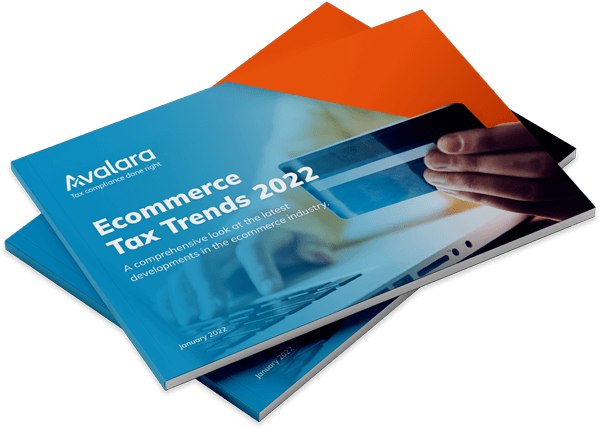
Top 4 global VAT/GST pitfalls and registration triggers
Across the globe, the concept of “nexus” is continuing to evolve, and indirect tax registration thresholds are being lowered. A new VAT registration can only be a click away, as receiving an order from a customer in a foreign jurisdiction can often be enough to trigger a local compliance requirement there.
We have set out below the top four scenarios that are likely to cause a VAT issue and trigger a local VAT/GST registration in a foreign country, even where the supplier/seller has no physical presence there.
1. Importing goods - Acting as named importer / consignee
If the customer acts as the Importer of Record (i.e. the named consignee on the import declaration), generally there should not be any VAT/GST issues for the seller in the ship-to country. This is because the customer is responsible for paying Import VAT at the border. However, if the seller acts as the Importer of Record in a foreign jurisdiction and imports the goods in its name (e.g. under DDP incoterms), then it will pay local Import VAT at the border, and the subsequent sale, delivery or movement of goods may then trigger a local VAT registration requirement. There may be commercial reasons why a foreign seller wants to be the importer and clear the goods through customs in its name e.g. delivering goods to a 3PL or marketplace warehouse, to avoid the customer having to deal with customs formalities or paying customs duties, or indeed upon the insistence of the customer. However, businesses should be aware of the additional compliance requirements resulting from this, which can include:
VAT registration
Appointing a local agent to act as a Fiscal Representative (in some countries including France, Hungary and Italy)
EORI registration (in UK and EU)
Appointing a customs agent as an indirect representative for customs purposes (in some countries including the UK and EU member states)
Retaining the required documentary evidence to recover the Import VAT (the invoice from the freight/shipping agent is not enough!)
Issuing a compliant tax invoice to the customer (meeting local country requirements)
Charging, collecting and remitting local VAT in the local currency (and using a mandated exchange rate if required)
Completing and submitting a local VAT return (which in some countries may be digital or require specialist software)
2. Remote sales of B2C goods - Ecommerce sales to overseas customers
Certain countries require foreign companies selling low value goods to consumers (B2C) to register for VAT/GST and to charge VAT/GST at the point of sale. This switches VAT collection from the customs border (as Import VAT) to VAT charged, collected and remitted by the overseas business (the remote seller). Even where the VAT registration is optional, obtaining a VAT number and charging the customer tax at the point of sale will likely provide a much better customer experience. It provides the consumer with certainty on cost, allowing the goods to clear the customs border through a green channel with fast clearance and no additional taxes to pay at the border, as well as making it easier to refund VAT on returned goods.
Where a business is selling goods with a consignment value under EUR 150 to consumers in the European Union, it is now possible to register for a pan-European single EU VAT registration – the Import One Stop Shop (IOSS). Making foreign ecommerce sellers register for VAT in the customer’s country is a growing trend, and in addition to the EU, countries that require this include Australia, New Zealand, Switzerland and Norway. Where a country doesn’t require a foreign business to register for VAT, businesses will still need to consider how Import VAT (and possibly customs duty too) will be paid at the border. While the customer may be responsible for this, it is usually possible to calculate the VAT and duty charges due and factor this into the pricing or collect from the customer at checkout and to arrange for the customs agent to pay this at the border so that the goods are cleared. Doing it this way removes the customer’s headache of having to pay it themselves direct.
3. Buying and selling in foreign country - Local procurement and drop-shipping
Goods are generally taxed where they are physically located when they are made available to the customer, or if provided with transport, where the transportation of those goods starts. The impact of this is that where goods are purchased overseas from a foreign vendor for shipment or sale to a customer (including under a drop-shipping model), then the seller is likely to incur VAT/GST on the purchase of the goods. They also have a requirement to register for VAT/GST in the country where the goods are being shipped from or to (or possibly both if not managed correctly). There is a simplification in the EU called “Triangulation” that can be used to avoid a VAT registration requirement in the EU countries where goods are shipped from and shipped to, but this requires the seller to be VAT registered in at least one EU country.
4. Digital services – Selling SasS, cloud, software and digital content to consumers
While most businesses can self-account for any local VAT/GST due in their countries (i.e. there is a reverse charge for business customers receiving services from foreign sellers), private consumers are unable to self-assess for tax. This has resulted in a growing trend of countries introducing legislation requiring foreign digital service businesses to register where their customer is. The definition of digital or electronically supplied services covered by these rules is very broad and can include:
- Subscription to websites, online content, web-hosting
- Downloaded or hosted software (including SaaS/cloud)
- Downloaded images, text, information, music, films or games
- E-books, online publications, digital magazines, online archives and databases
- Apps, in-app purchases
- Online membership including online dating and industry associations
- Pre-recorded online training and education
- Online gaming
There are now over 100 jurisdictions around the world that tax B2C digital services, some with no or low revenue thresholds. Businesses that sell digital services to consumers in EU countries can register in a single EU country for a pan-European VAT number called the One Stop Shop (Non-Union scheme). This enables them to report and pay VAT across the 27 EU countries in a single quarterly return.
While the above pitfalls and the requirements that are triggered may seem scary, onerous and represents barriers to trade, Avalara is here to assist you at every stage and help your business grow internationally. Contact Avalara’s VAT experts to discuss any of the issues outlined above and how we can assist with global VAT and GST compliance.
Avalara's end-to-end IOSS solution
Sell to all 27 EU member states with just one VAT return. Get your business ready with our end-to-end IOSS solution.
Stay up to date
Sign up for our free newsletter and stay up to date with the latest tax news.




